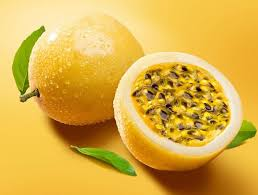Passion fruit cultivation Tips from world
Passion fruit cultivation Tips from world
Passion fruit, scientifically known as Passiflora edulis, is a tropical vine that produces delicious and aromatic fruits. Cultivating passion fruit can be a rewarding experience, whether you are a home gardener or a commercial farmer. To ensure a successful harvest and healthy vine growth, it is essential to follow proper cultivation practices and take into account various factors such as climate, soil conditions, and pest management. In this comprehensive guide, we will delve into the intricacies of passion fruit cultivation, providing you with valuable tips to achieve optimal results.
1. **Climate and Location:**
Passion fruit thrives in warm, tropical or subtropical climates with temperatures ranging from 68°F to 86°F (20°C to 30°C). The vine is susceptible to frost, so avoid planting in areas with freezing temperatures. Choose a sunny location with at least 6-8 hours of direct sunlight per day for robust growth and fruit production.
2. **Soil Preparation:**
Passion fruit prefers well-draining soil rich in organic matter. Before planting, prepare the soil by removing weeds, rocks, and debris. Incorporate compost or well-rotted manure to improve soil fertility and moisture retention. The soil pH should ideally be between 6.5 and 7.5 for optimum nutrient uptake.
3. **Propagation:**
Passion fruit can be propagated from seeds or cuttings. If using seeds, collect them from ripe fruits, clean them, and sow in a seedling tray filled with a well-draining potting mix. Keep the tray in a warm and bright location, and the seeds will germinate in 2-4 weeks. For cuttings, take 6-8 inch (15-20 cm) long semi-hardwood cuttings and treat them with rooting hormone before planting in a suitable rooting medium.
4. **Support and Trellising:**
Passion fruit vines are vigorous climbers that require sturdy support. Install trellises, fences, or pergolas at the time of planting to provide support for the growing vines. Proper trellising helps with vine management, enhances fruit exposure to sunlight, and aids in pest control.
5. **Watering:**
Adequate and consistent watering is crucial for passion fruit cultivation. Water the vines deeply, especially during dry spells, to ensure proper root development. However, avoid waterlogging, as this can lead to root rot. Young plants need more frequent watering, while established vines require less but regular irrigation.
6. **Fertilization:**
Passion fruit plants have high nutrient requirements, especially for potassium and phosphorus, to support flowering and fruit development. Apply a balanced fertilizer with higher potassium and phosphorus content, and avoid excessive nitrogen, which can lead to excessive vegetative growth at the expense of fruiting.
7. **Pruning:**
Regular pruning is vital to maintain the health and productivity of passion fruit vines. Prune away dead or diseased branches, and trim excessive growth to improve airflow and sunlight penetration. Pruning also helps manage the size of the vine and prevents overcrowding.
8. **Pest and Disease Management:**
Keep a close eye on your passion fruit plants for signs of pests and diseases. Common pests include aphids, mealybugs, and fruit flies. Neem oil or insecticidal soap can be used for organic pest control. For diseases, practice good garden hygiene and remove affected plant material promptly.
9. **Pollination:**
Passion fruit flowers are usually self-pollinating, but cross-pollination can lead to better fruit set and higher yields. Encourage pollinators like bees and butterflies by planting nectar-rich flowers nearby.
10. **Harvesting:**
Passion fruits are ready for harvest when they have fully developed their color and start to wrinkle slightly. Gently twist the fruits to detach them from the vine. For yellow varieties, wait until the fruits drop naturally from the vine. Harvest fruits regularly to promote continuous flowering and fruiting.
11. **Post-Harvest Handling:**
Handle harvested passion fruits with care to avoid bruising. Store them in a cool, well-ventilated place or refrigerate for extended storage. Fresh passion fruits can last for up to two weeks under proper storage conditions.
12. **Crop Rotation and Disease Prevention:**
Practice crop rotation to prevent the buildup of soil-borne diseases. Avoid planting passion fruit or other related crops in the same location for consecutive seasons.
13. **Harvest and Yield Management:**
Passion fruit vines can start fruiting within 8-12 months after planting. Yield can vary depending on the variety, growing conditions, and management practices. Regularly monitor the vine's health and yield to identify any issues promptly.
14. **Passion Fruit Varieties:**
There are various passion fruit varieties available, including purple, yellow, and Panama varieties. Each type has its unique taste and attributes, so consider your climate and market preferences when selecting the variety.
15. **Record Keeping:**
Maintain detailed records of planting dates, fertilization schedules, pest and disease treatments, and harvest yields. Keeping records helps identify patterns and make informed decisions for future cultivation.
In conclusion, passion fruit cultivation requires careful attention to detail, but the effort is well worth the delicious fruits you'll enjoy. By following these comprehensive tips, you can increase your chances of a successful passion fruit harvest, whether you are cultivating on a small scale for personal use or on a larger scale for commercial purposes. With proper care, your passion fruit vine will flourish and provide you with an abundant supply of these delightful tropical fruits. Happy cultivating!











Comments
Post a Comment